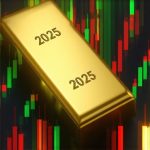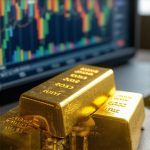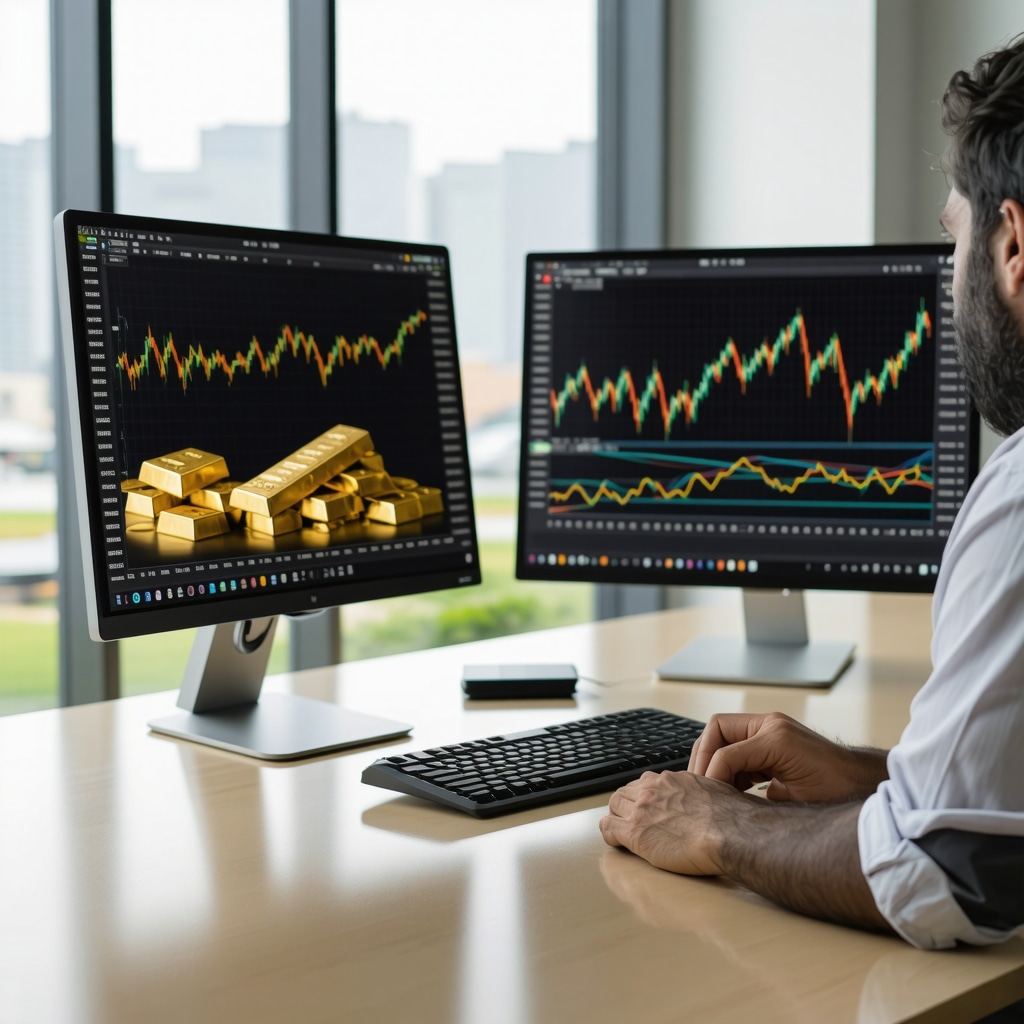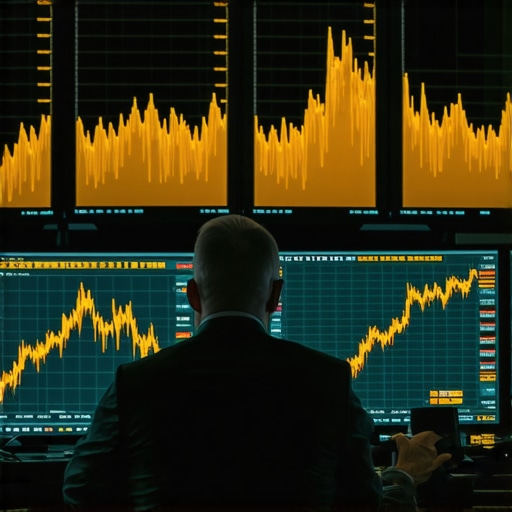How I Took My First Steps Into Gold Futures Trading
I still remember the mix of excitement and nerves I felt when I first considered gold futures trading. Having always been fascinated by gold’s historic role as a safe haven, I wanted to explore how to trade gold futures myself. My initial dive was a blend of curiosity, research, and trial—something I believe every beginner can relate to. Trading gold futures opened my eyes to a dynamic way of engaging with the gold market, beyond simply buying physical gold or ETFs.
Why Gold Futures? My Personal Perspective on This Investment Avenue
What drew me to gold futures trading was the potential to leverage price movements without needing to own physical gold. The contracts allow traders to speculate on gold’s future price, which can offer both profit opportunities and risk management tools. Unlike traditional gold investing, futures trading requires understanding contract specifications, margin requirements, and market volatility. I quickly learned that staying informed on global economic indicators and geopolitical events is crucial because these factors heavily influence gold prices.
What Should You Know Before Diving Into Gold Futures Trading?
When I started, my biggest question was about the risks and how to mitigate them. The truth is, gold futures can be highly volatile, and leverage can amplify both gains and losses. I recommend beginners first get familiar with concepts like contract sizes, expiration dates, and how margin calls work. It’s wise to practice on simulation platforms before trading with real money to build confidence. Resources like the CME Group’s official gold futures page provide authoritative information that helped me grasp the technical aspects and stay updated on market conditions.
Insights I Gained Navigating Gold Market Volatility
One personal insight was recognizing how gold futures react to inflation data, currency fluctuations, and central bank policies. For example, when inflation fears rise, gold prices often surge, creating trading opportunities. I found tracking economic calendars and news critical to timing trades effectively. If you’re interested in a deeper dive into how gold futures impact market volatility, I found this comprehensive guide quite enlightening.
Would You Like to Share Your Own Experiences or Questions?
If you’re considering gold futures trading or already dabbling in it, I’d love to hear your stories or any questions you might have. Feel free to leave a comment below so we can learn from each other’s journeys. Exploring this market has been both challenging and rewarding, and sharing insights makes the path easier for all of us.
Advanced Techniques for Managing Gold Futures Risks
As I delved deeper into gold futures trading, it became clear that managing risk is not just about avoiding losses but also about strategically positioning to capitalize on market volatility. One technique I adopted early on was using stop-loss orders to protect against sudden price swings. This approach helped limit downside risks without requiring constant monitoring of the market. Additionally, I learned to diversify my trading portfolio by including options and ETFs alongside futures, which provided a buffer against unpredictable market movements.
Understanding the concept of margin calls was pivotal. Margin requirements can fluctuate based on market conditions, and being caught unprepared can lead to forced liquidations. I always maintained a buffer in my trading account to meet any margin calls promptly, which prevented unnecessary losses and stress.
How Do Economic Indicators Influence Gold Futures Trading Decisions?
Gold futures are highly sensitive to various economic indicators such as inflation rates, employment data, and central bank interest rate decisions. For example, an unexpected increase in inflation can trigger a rapid uptick in gold prices as investors seek a safe haven. Conversely, strong employment figures might strengthen the US dollar, causing gold prices to dip. I found that integrating economic calendars into my trading routine and analyzing data releases beforehand allowed me to anticipate possible price movements and adjust my positions accordingly.
Can Technical Analysis Enhance Your Gold Futures Trading Success?
While fundamental analysis provides the macroeconomic context, I discovered that technical analysis is invaluable for timing trades in the gold futures market. By studying chart patterns, moving averages, and momentum indicators, I could pinpoint entry and exit points with greater precision. For instance, recognizing support and resistance levels helped me avoid entering trades during potential reversals. Combining both fundamental and technical insights has significantly improved my overall trading strategy.
To further enhance your understanding, consider exploring comprehensive resources like the gold trading techniques guide, which offers practical tips for navigating price volatility effectively.
Integrating Gold Futures Into a Balanced Investment Portfolio
Gold futures trading doesn’t have to be an isolated activity; it can complement other investment vehicles to create a balanced portfolio. For example, coupling gold futures with physical gold holdings or gold ETFs can provide liquidity and reduce overall portfolio risk. I also explored gold stocks, which offer exposure to the mining sector and potential dividends. This blend of instruments allowed me to tailor risk and reward profiles according to market conditions and my personal investment goals.
In fact, the strategic allocation of gold futures within a diversified portfolio can serve as a powerful hedge against inflation and geopolitical uncertainties, enhancing long-term wealth preservation.
What Are the Key Psychological Traits Needed for Successful Gold Futures Trading?
Trading gold futures is as much a psychological challenge as it is a technical one. Patience, discipline, and emotional control are crucial traits I cultivated over time. The temptation to overtrade or chase losses can be detrimental, so having a clear trading plan and sticking to it is essential. Regularly reviewing trades to learn from mistakes and successes also contributed to my growth as a trader.
Moreover, developing resilience to market volatility and accepting that losses are part of the learning curve helped me maintain a long-term perspective.
For those interested in starting or improving their gold futures trading approach, I highly recommend reading more about effective gold trading techniques to build consistency in profits.
When Market Sentiment Meets Gold Futures: Lessons From Real-Time Trading
One of the most eye-opening experiences I’ve had trading gold futures was learning to interpret market sentiment beyond raw data. It’s one thing to understand economic indicators, but it’s another to gauge how traders collectively react to them, which can sometimes defy textbook logic. For example, during periods of geopolitical tension, the immediate spike in gold futures prices often reflects a rush to safety, yet the duration and intensity of these moves can vary unexpectedly.
In these moments, I realized that staying plugged into market psychology—through sentiment analysis tools and real-time news—amplified my ability to time entries and exits more effectively. This nuanced understanding helped me avoid the pitfalls of herd behavior while capitalizing on genuine market shifts.
How Do Global Central Bank Policies Shape Gold Futures Dynamics?
Central banks globally have a profound influence on gold’s price trajectory, often through their buying or selling of gold reserves and monetary policy decisions. I’ve tracked how announcements from institutions like the Federal Reserve or the European Central Bank impact gold futures almost instantaneously. For instance, a dovish stance that signals prolonged low-interest rates tends to bolster gold’s appeal, pushing futures prices upward.
But it’s not just about policy direction; the scale and timing of central bank gold purchases or sales can cause sharp moves. I found that following insights on central bank gold buying trends provided an edge in anticipating these price shifts. Integrating this knowledge into my trading strategy allowed me to better align with macroeconomic trends rather than react belatedly.
What’s the Role of Seasonality and Demand Cycles in Gold Futures Trading?
One subtlety I grew to appreciate is gold’s seasonality — how demand ebbs and flows across different times of the year, influenced by cultural, industrial, and investment factors. For example, demand often rises during festival seasons in India or ahead of holidays when jewelry purchases surge, which can tighten supply and nudge prices higher.
Recognizing these demand cycles helped me anticipate short-term price movements that pure technical analysis might overlook. This perspective is well captured in detailed market studies like understanding gold demand trends, which I revisited frequently to refine my timing and position sizing.
Balancing Intuition With Data: My Approach to Evolving Trading Strategies
Over time, I learned that no single approach suffices in the complex world of gold futures. While data-driven strategies offer structure and discipline, sometimes intuition—honed by experience—guides critical decisions, especially during unexpected market shocks. For example, during sudden geopolitical events, my gut feeling to hold or adjust positions has often complemented my analytical framework.
That said, I remain cautious to avoid emotional overreach. To maintain this balance, I document my trades and rationales meticulously, reviewing them to identify when intuition served me well and when it led astray. This reflective practice has deepened my understanding of my own trading psychology and improved my adaptability.
How Do You Navigate the Challenge of Overtrading in Gold Futures?
One question I often receive from fellow traders is how to resist the temptation of overtrading, especially given the high volatility and rapid movements common in gold futures markets. My advice is to cultivate patience and a clear plan that includes defined entry and exit criteria. Without this, it’s easy to fall into the trap of chasing every price swing, which can erode capital quickly.
For those seeking to build this discipline, resources like techniques for consistent profits in volatile markets offer practical frameworks that helped me stay focused and avoid emotional pitfalls.
Invitation to Share Your Gold Futures Journey
Trading gold futures has been a transformative journey—full of lessons, challenges, and moments of clarity. I invite you to share your experiences or questions below. Whether you’re grappling with timing, risk management, or strategy adjustments, discussing these nuances together enriches our collective understanding. If you want to explore more advanced insights, feel free to dive into related discussions or resources on this site, like the comprehensive guide to gold futures trading for 2025. Let’s continue this conversation and grow stronger as traders and investors.
Decoding Market Sentiment: Beyond the Numbers in Gold Futures Trading
Reflecting on my ongoing journey with gold futures, one of the most transformative realizations has been how market sentiment often transcends the cold hard data economists provide. While macroeconomic indicators lay the groundwork for price forecasts, the collective psychology of market participants can sometimes send prices on unexpected trajectories. I’ve found that integrating sentiment analysis tools—such as the Commitment of Traders (COT) reports and social media sentiment trackers—enables me to capture these ephemeral shifts. This approach helped me interpret why, during certain geopolitical crises, gold futures spike sharply but then retrace sooner than fundamental conditions might suggest.
Moreover, tuning into market chatter through real-time news feeds and expert commentary has proven invaluable. It equips me with a nuanced perspective that separates transient panic from sustained trends, refining my entry and exit timing. These insights complement the technical indicators I use and guard against the herd mentality that can lead to costly mistakes.
How Can Advanced Sentiment Analysis Tools Enhance Gold Futures Trading Strategies?
Delving deeper, I explored sophisticated sentiment metrics, such as the Gold Fear & Greed Index or analyzing options market skew, which reveal underlying trader anxieties or optimism. These tools offer a unique layer of market intelligence, helping anticipate volatility spikes or corrections. For example, an elevated fear index often precedes a surge in futures prices as investors scramble for safe havens, while extreme greed can precede sharp pullbacks.
Incorporating these elements into my risk management framework allowed me to fine-tune stop-loss levels and position sizes dynamically, improving my trade resilience. For those seeking a comprehensive understanding, the detailed analysis on how gold futures influence market volatility provides an excellent resource to deepen your grasp of these complex interplays.
Harnessing Central Bank Movements: A Macro Lens on Gold Futures Dynamics
Another sophisticated dimension of my trading experience has been closely monitoring global central bank policies and their gold reserve activities. The strategic accumulation or liquidation of gold by central banks often signals macroeconomic shifts before they fully permeate markets. For instance, when the Federal Reserve adopts dovish monetary policies coupled with notable gold purchases by emerging market central banks, it often creates a bullish backdrop for gold futures.
Understanding the timing and scale of these transactions requires vigilance and access to reliable data sources. I’ve benefited immensely from analyses like insights on central bank gold buying trends, which dissect these subtle supply-demand shifts that ripple through futures pricing.
This macro lens not only informs my directional bias but also aids in anticipating periods of heightened volatility, enabling more strategic positioning and hedging.
The Art of Balancing Intuition and Quantitative Data in Evolving Market Conditions
As my expertise matured, I recognized that successful gold futures trading demands an elegant balance between data-driven analysis and cultivated intuition. During unprecedented events—like sudden geopolitical escalations or unexpected economic announcements—rigid adherence to models can be limiting. Instead, drawing upon accumulated experience and gut instincts often guides critical decisions on holding, scaling, or exiting positions.
To maintain objectivity, I rigorously document each trade’s rationale, comparing outcomes against both fundamental and intuitive forecasts. This reflective practice sharpens my emotional discipline and clarifies when to trust analytical frameworks versus when to lean on experiential insight.
Alongside this, I’ve continuously refined my strategies by incorporating lessons from resources such as the guide on effective gold trading techniques, which blends disciplined methodologies with adaptive tactics for volatile environments.
Invitation to Share Your Advanced Gold Futures Insights and Challenges
Gold futures trading remains a compelling blend of art and science, one where continuous learning and adaptation are keys to enduring success. I’m keen to learn about your own experiences navigating the subtleties of market sentiment, central bank signals, or balancing intuition with data. What strategies have you found indispensable, and what challenges keep you evolving? Feel free to share your perspectives or pose questions below—together, we can cultivate a richer understanding and sharpen our collective edge. For those ready to elevate their approach, exploring the comprehensive guide to gold futures trading for 2025 offers advanced tactics and insights that have personally guided my journey forward.
Things I Wish I Knew Earlier (or You Might Find Surprising)
Gold Futures Are Not Just About Prices — They’re About Psychology Too
Early on, I underestimated how much my mindset affected my trading outcomes. It’s tempting to focus solely on charts and numbers, but patience and emotional control are just as critical. Learning to accept losses without frustration and resisting the urge to overtrade were game changers. If I could rewind, I’d tell my younger self to dedicate time to mastering trading psychology alongside market analysis.
Volatility Isn’t the Enemy — It’s an Opportunity Wrapped in Risk
Gold futures are famously volatile, which scared me at first. However, I learned that volatility creates the potential for profit if managed correctly. Instead of avoiding it, embracing volatility with clear risk management tools like stop-loss orders helped me turn wild price swings into strategic opportunities. Recognizing this shift in perspective made a huge difference in how I approached trades.
The Impact of Central Banks Goes Beyond Headlines
While central bank announcements often grab headlines, the subtle buying and selling of gold reserves can influence futures prices quietly but profoundly. Tracking these movements helped me anticipate market shifts before they became obvious to the broader public. For those curious, exploring detailed analyses on central bank gold buying trends is eye-opening and added a valuable macroeconomic layer to my strategy.
Seasonality and Cultural Demand Are Hidden Drivers
Gold demand tied to festivals, holidays, and jewelry buying seasons can cause price fluctuations that technical charts alone don’t capture. Once I started factoring these cycles into my timing, I noticed more profitable entry points. It reminded me that markets are deeply human — influenced by traditions and behaviors worldwide. Revisiting insights on gold demand trends helped me refine this perspective.
Combining Intuition with Data Strengthens Your Edge
Numbers and models are essential, but there were moments when gut instincts guided me through unexpected geopolitical or economic shocks. Over time, I learned to balance this intuition with disciplined analysis, documenting my decisions to learn when to trust each. This blend keeps trading adaptive and responsive, especially in unpredictable markets.
Resources I’ve Come to Trust Over Time
CME Group’s Official Gold Futures Page – For authoritative contract details and market updates, this was my go-to starting point. It’s reliable and comprehensive for both beginners and seasoned traders.
BuyingGoldNow’s Guide on How Central Bank Gold Buying Influences Global Demand – This resource helped me understand the macro drivers behind price shifts that aren’t always obvious from everyday news.
Gold Trading Techniques Quick Tips – A practical guide that offered actionable strategies to navigate the high volatility of gold futures, helping me refine my entry and exit points.
Understanding Gold Demand Trends for Smarter Investments – This deep dive into seasonal and cultural factors gave me a fresh lens on timing trades around real-world demand cycles.
Comprehensive Guide to Gold Futures Trading for 2025 – As markets evolve, this guide keeps me updated on new strategies and regulatory nuances, ensuring my approach remains current and effective.
Parting Thoughts from My Perspective
Trading gold futures has been a journey of learning, patience, and constant adaptation. What stands out most to me is how multifaceted this market is — it’s influenced not just by economic data but by psychology, global policies, and human behaviors. Whether you’re just starting or looking to deepen your expertise, embracing both the art and science of gold futures trading will serve you well.
Remember, there’s no shortcut to mastery, but with the right mindset and trusted resources, you can build a resilient and rewarding trading practice. If this resonated with you, I’d love to hear your thoughts or experiences with gold futures. Feel free to drop your insights in the comments below — let’s keep learning together.











I really appreciated the author’s honest take on that first mix of excitement and nerves — I felt the same when I opened my first demo account. A practical tip that helped me transition from curiosity to consistent practice was starting with smaller contract sizes (micro gold contracts) on a simulation platform so I could experience margin mechanics and expiration behavior without risking much capital. That made margin calls and leverage feel less abstract.
Another thing I found valuable was pairing an economic calendar with a simple technical checklist: note upcoming inflation or central bank events, then confirm entries with a moving average or RSI signal. Also, journaling every trade (rationale, emotion, result) made the psychology lessons concrete — after a month I spotted clear patterns in my impulsive trades and tightened my stop-loss discipline.
Has anyone here found a particular simulation platform or journaling method especially helpful for making that jump from demo to live, or do you prefer scaling position size instead? Would love to compare approaches.